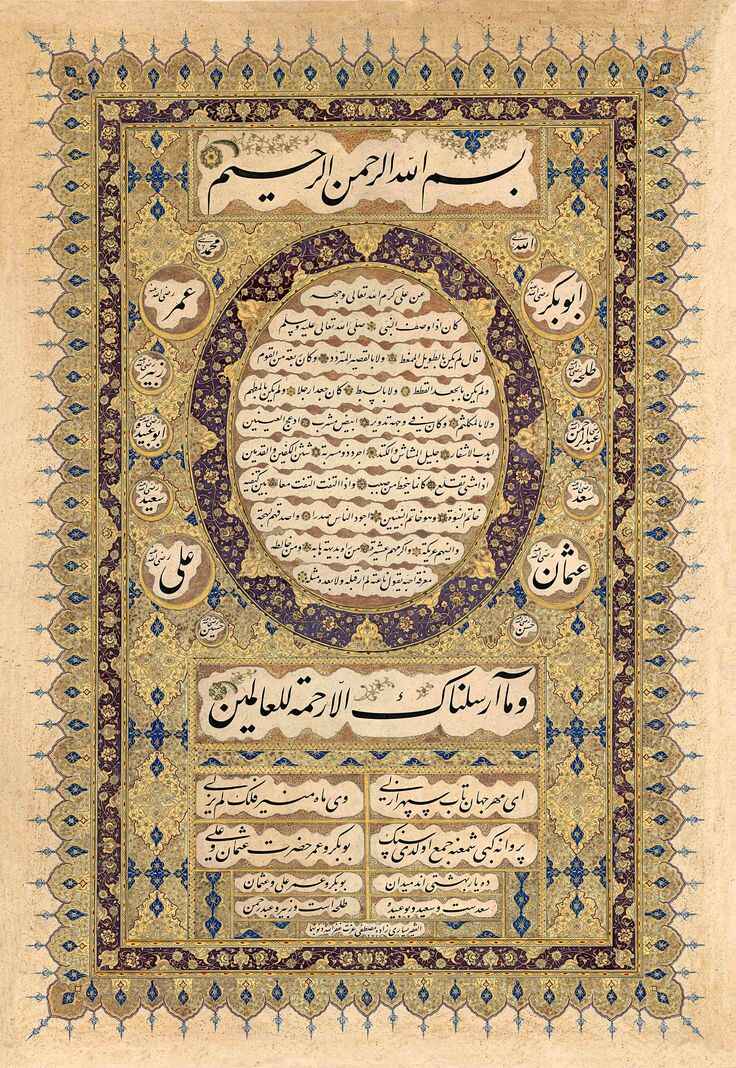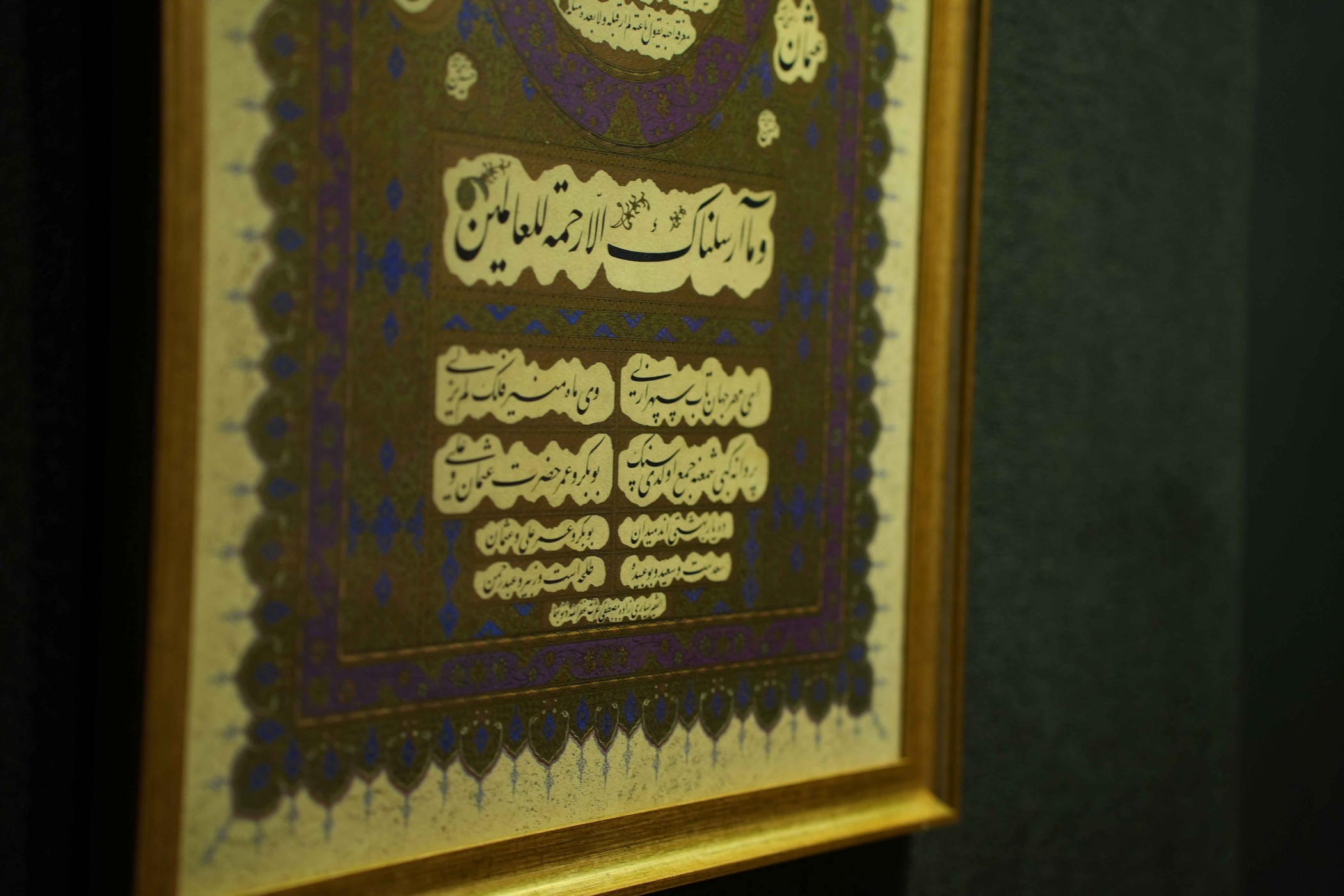The Hilya Sharif by Yesarizade
What is the Hilya Sharif?
The Hilya Sharif, or “The Noble Description,” is an artistic expression of love and respect for Prophet Muhammad (Peace and blessings be upon him) through textual portrayals of his appearance and character. This practice honors the Prophet while adhering to Islamic tradition. Originating from accounts documented by the Prophet’s companions, the Hilya tradition evolved from simple descriptions to elaborate artistic expressions.
The Hilya’s artistic development peaked in the Ottoman era. More than just a historical artifact or beautiful artwork, the Hilya represents a universal expression of love and respect for Prophet Muhammad (Peace and blessings be upon him), transcending time and space. The Hilya Sharif endures as a symbol of Islamic art and spirituality. It demonstrates how art can connect individuals to the divine, encouraging reflection on the Prophet’s life and teachings. Continuing to inspire and guide believers, the Hilya Sharif serves as an emblem of devotion, beautifully weaving together art, history, and spiritual contemplation within Islamic culture.

Delving Deeper into its Meanings
A Closer Look at This Unique Piece

Yasin Art is Committed to Delivering High-Quality Art, Crafted With Care and a Focus on Excellence.
Yesarizade Mustafa Izzet Efendi
d. 1849
Yesarizade Mustafa Izzet Efendi was a distinguished Ottoman calligrapher, poet, scholar, and statesman, revered as one of the last great masters of classical Islamic calligraphy. The son of famed calligrapher Yesari Mehmed Esad Efendi, he mastered thuluth and naskh scripts under his father’s tutelage, developing an elegant style that earned him imperial favor. Beyond his artistic legacy, he served as a kadi (judge) in both Istanbul and Mecca, reflecting his deep religious scholarship and administrative acumen. As court calligrapher, he produced magnificent Qur’ans, architectural inscriptions (including those in Istanbul’s Sultanahmet Mosque and Topkapı Palace), and exquisite hilye-i şerifs (calligraphic portraits of the Prophet). A polymath, he also composed poetry under the pen name “Izzet” and held key government roles during the Tanzimat reforms. His works epitomize the zenith of Ottoman calligraphic tradition, blending technical mastery with spiritual depth, while his judicial service underscores his multifaceted legacy as both an artist and Islamic scholar.




